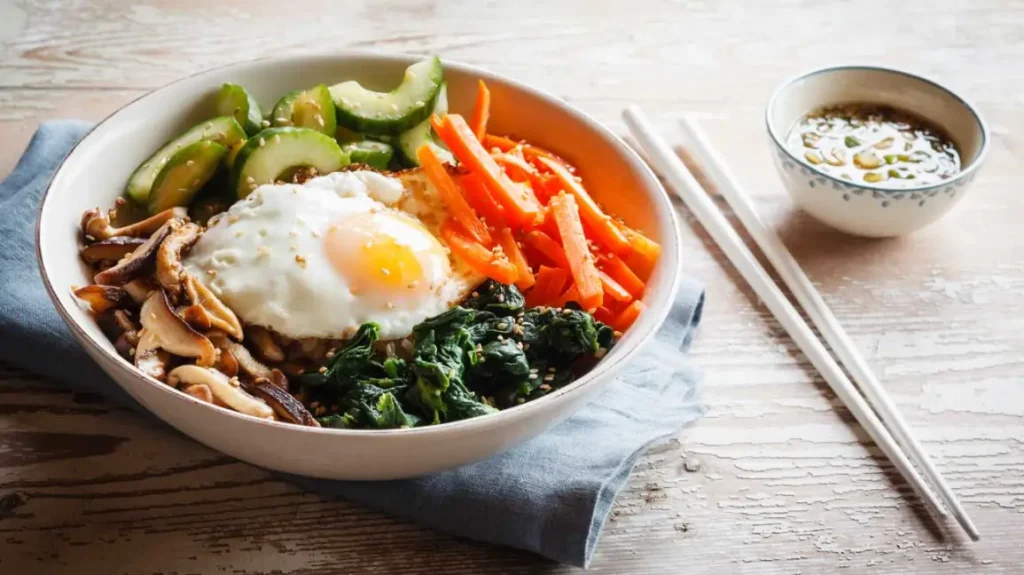The K-Style Diet, short for Korean-Style Diet, is gaining global attention for its health benefits, balanced nutrition, and its role in maintaining youthful energy and appearance. Rooted in traditional Korean cuisine and modern wellness science, the K-Style Diet goes beyond just what you eat—it’s a sustainable lifestyle that emphasizes natural ingredients, portion control, and mindful eating.
In this article, we’ll explore what the K-Style Diet is, how Korean-style nutrition coaching works, and why it’s becoming a popular choice for health-conscious individuals and international wellness seekers.
What Is the K-Style Diet?
The K-Style Diet is based on traditional Korean eating habits, but refined for modern health and wellness goals. It typically includes:
- 🥬 High vegetable intake – Kimchi, spinach, radish, seaweed, and more.
- 🍚 Moderate carbs – Steamed rice, sweet potatoes, multigrain mixes.
- 🐟 Lean proteins – Fish, tofu, legumes, eggs, and occasional meat.
- 🥣 Fermented foods – Kimchi, doenjang (soybean paste), and yogurt for gut health.
- ❌ Minimal processed foods and sugars – A natural, whole-food approach.
Unlike Western diet trends that often focus on elimination (like keto or low-carb), the K-Style Diet emphasizes balance, variety, and digestion-friendly meals that align with Korean wellness philosophy.
Core Principles of Korean-Style Nutrition Coaching
When you work with a Korean nutrition coach—either in-person or through an online program—you’ll likely follow these key steps:
1. Personalized Body Assessment
Every individual is different. Korean-style nutrition coaching begins with a holistic health evaluation, including body type (somatotype), metabolism, lifestyle, and sometimes even constitutional medicine (based on Eastern principles).
2. Meal Planning Based on Korean Foods
Coaches design a realistic meal plan using traditional Korean dishes modified to suit your needs. Expect ingredients like:
- Barley tea instead of sugary drinks
- Soups with seasonal vegetables
- Banchan (side dishes) that reduce cravings
3. Mindful Eating Habits
Korean-style coaching focuses on slow, conscious eating, regular mealtimes, and smaller portions. This helps in controlling overeating and improving digestion.
4. Weekly Monitoring & Counseling
You’ll get regular check-ins (in-person or via apps), where coaches analyze progress and adjust meals. Many clinics in Korea also combine nutrition coaching with body composition analysis, fat loss monitoring, or IV therapy.
Benefits of the K-Style Diet
✅ Supports Healthy Weight Loss – Without drastic restrictions
✅ Improves Gut Health – Thanks to fermented foods
✅ Promotes Radiant Skin & Anti-Aging – Through antioxidant-rich meals
✅ Culturally Satisfying – If you enjoy Korean cuisine, it’s delicious and sustainable
✅ Long-Term Wellness – Encourages gradual lifestyle transformation
Who Should Try the K-Style Diet?
This diet is ideal for:
- 🌍 International patients visiting Korea for wellness retreats or medical tourism
- 🧘♀️ People looking for a sustainable, non-extreme diet
- 🍱 Fans of Korean cuisine seeking healthier versions
- 🩺 Those with mild metabolic issues, gut imbalances, or food sensitivities
Many Korean clinics now offer nutrition coaching packages specifically tailored to foreigners, complete with English-speaking consultants, meal tracking apps, and in-clinic diagnostics.
Getting Started with K-Style Nutrition Coaching in Korea
If you’re visiting Korea or planning to include health coaching in your wellness journey, here are steps to begin:
- Choose a clinic or coaching service that specializes in the K-Style Diet
- Book a body assessment session (often includes InBody scan, BMI, and metabolic rate)
- Start a weekly or monthly program (can include meal plans, recipes, check-ins)
- Combine with wellness therapies like IV drips, acupuncture, or fitness plans
Many top clinics in Seoul and Busan offer comprehensive K-Style Diet Programs that combine coaching with medical-grade body analysis.
Final Thoughts
The K-Style Diet isn’t just a trend—it’s a time-tested approach to health rooted in Korean food culture and modern science. Whether you’re a local or a medical tourist in Korea, this balanced, holistic nutrition method can help you achieve sustainable weight loss, improved digestion, and long-term vitality.
Ready to try it?
Explore top-rated Korean nutrition clinics offering K-Style Diet coaching and start your wellness journey today.




